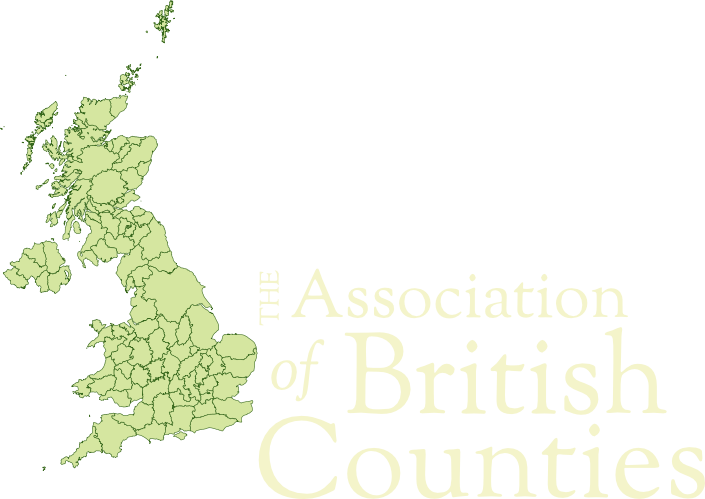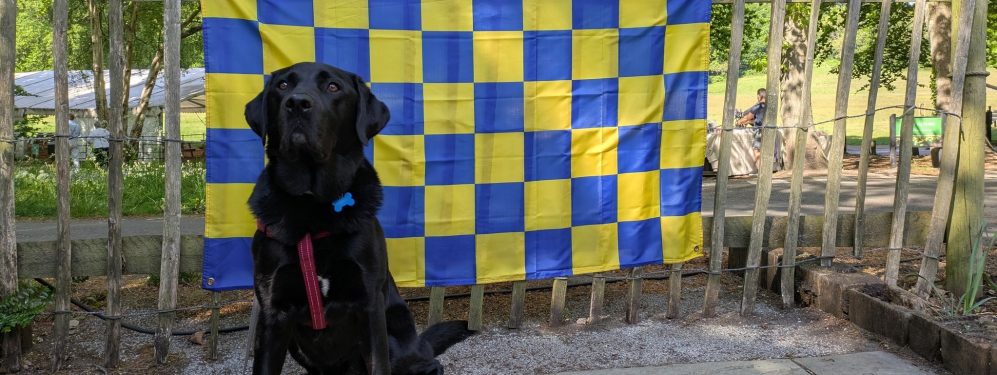Saturday 10th May 2025 is Surrey Day, a day to celebrate the people, places, history and heritage of Surrey. In celebration we present some of the county’s often overlooked gems in Secret Surrey.
Surrey is a relatively small county but heavily populated; in parts urban, suburban and rural. The north-east of Surrey lies within the Metropolitan conurbation. In this area are Southwark, opposite the City of London, home of a Cathedral and of much of the broadcast media; Lambeth, home of the Archbishop of Canterbury; Brixton; Wandsworth; and the wealthy towns of Richmond upon Thames and Kingston upon Thames. Even in this area there are broad expanses of breathing-space: Richmond Park and Wimbledon Common the largest.
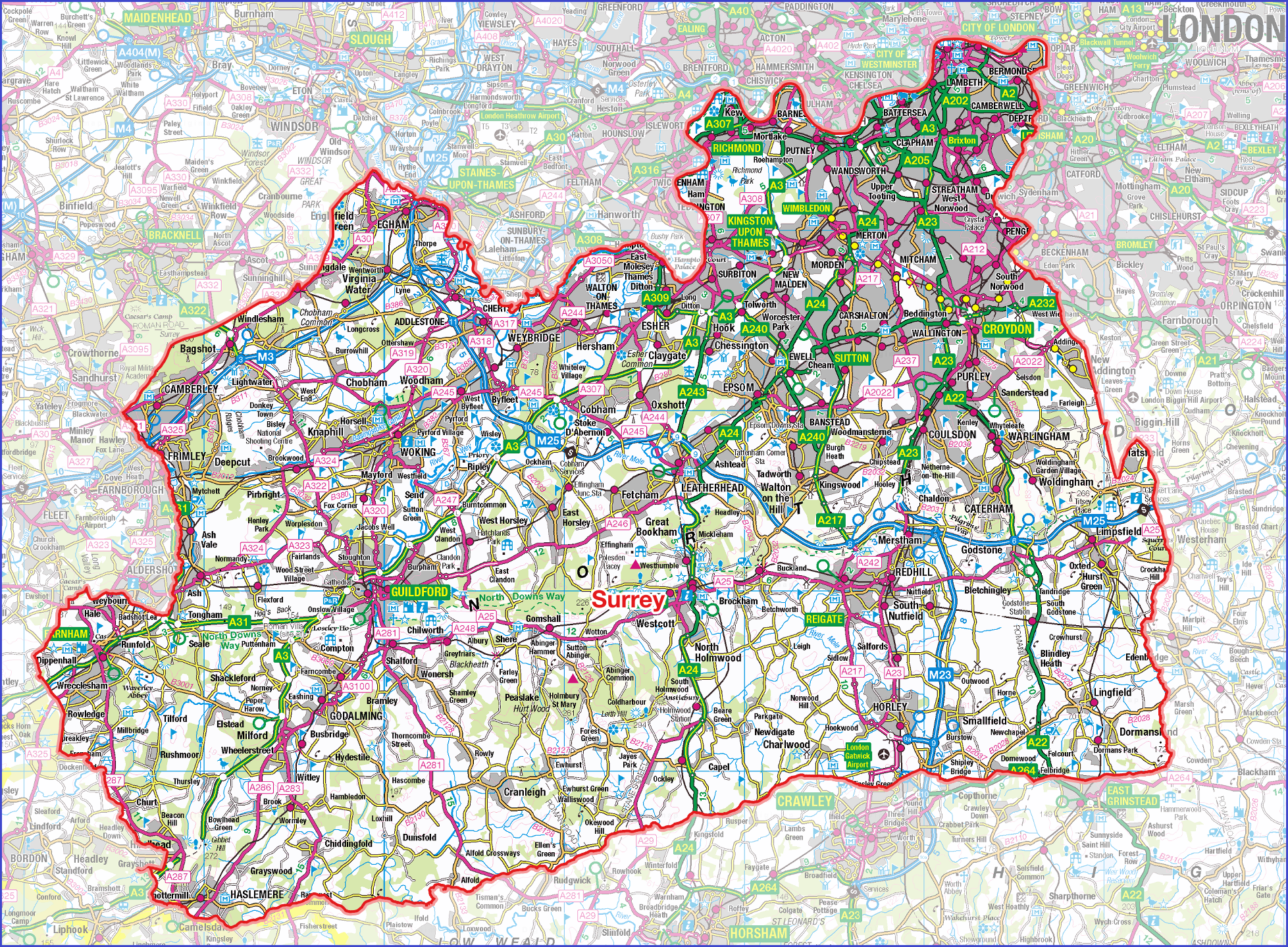
Outside the Metropolis, Surrey’s commuter suburbs have become the essence of our understanding of “Suburbia”. Further from London the villages become smaller and very pleasant. The North Downs, a range of fine chalk hills and downland, stretch across Surrey from Guildford into Kent. Box Hill provides a fine viewpoint over its sudden southern scarp slope. Further hills lie to the south, beautifully wooded in places. The highest point is Leith Hill, at 965 feet but with a manmade tower added to take it up to above 1,000 feet.
Gatwick Racecourse Bandstand
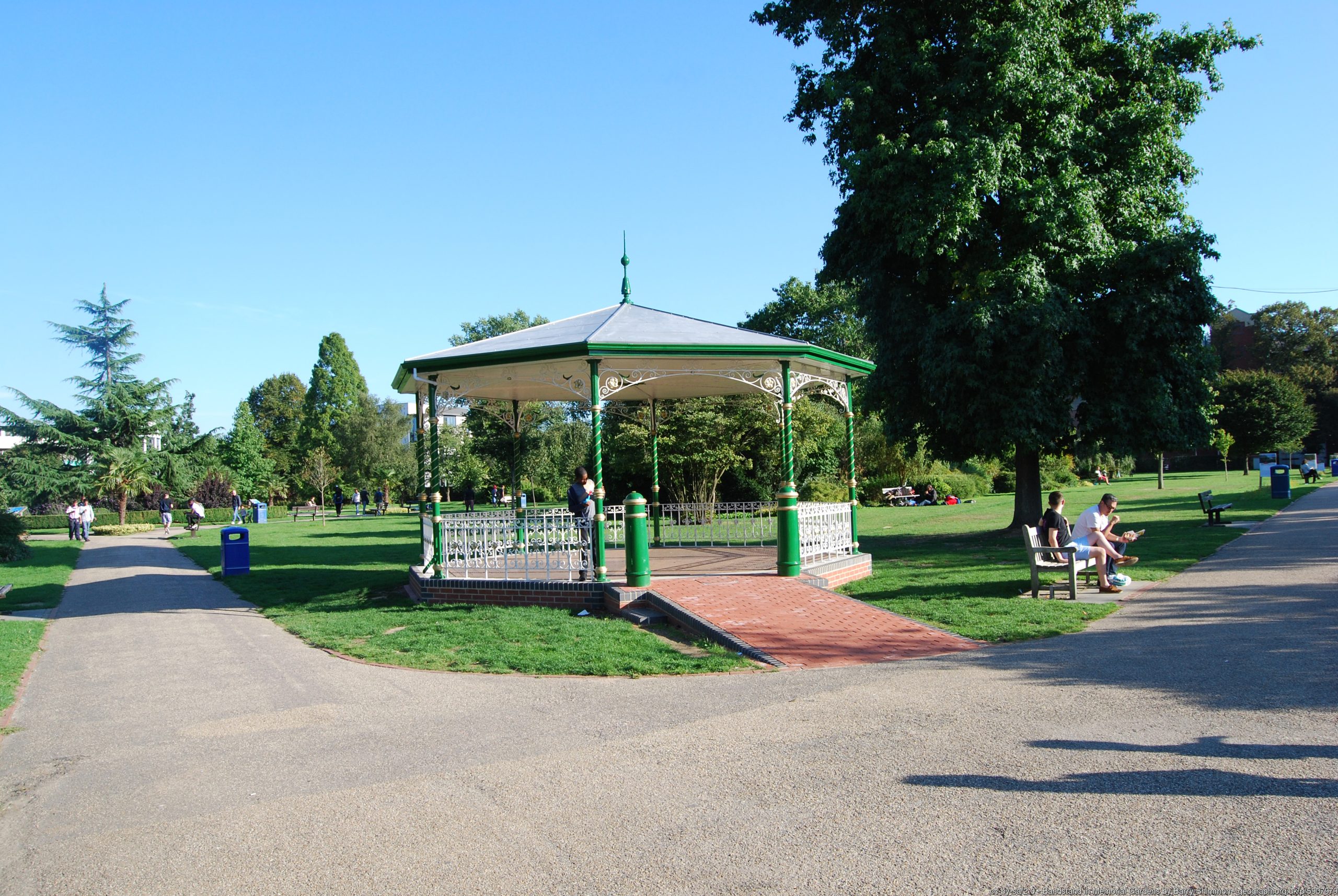
Long forgotten to most, Gatwick Racecourse operated from 1891 to 1940. The site, alongside the London to Brighton line, was requisitioned for the war effort in 1939 and never re-opened. All trace of the racecourse has long since been obliterated by Gatwick Airport – except for two relicts. The first is Gatwick Airport railway station, which was opened as Gatwick Station in 1891 to serve the racecourse. The second is the racecourse’s bandstand which was saved and now stands in Memorial Gardens in nearby Crawley in Sussex.
Catholic Apostolic Church, Albury
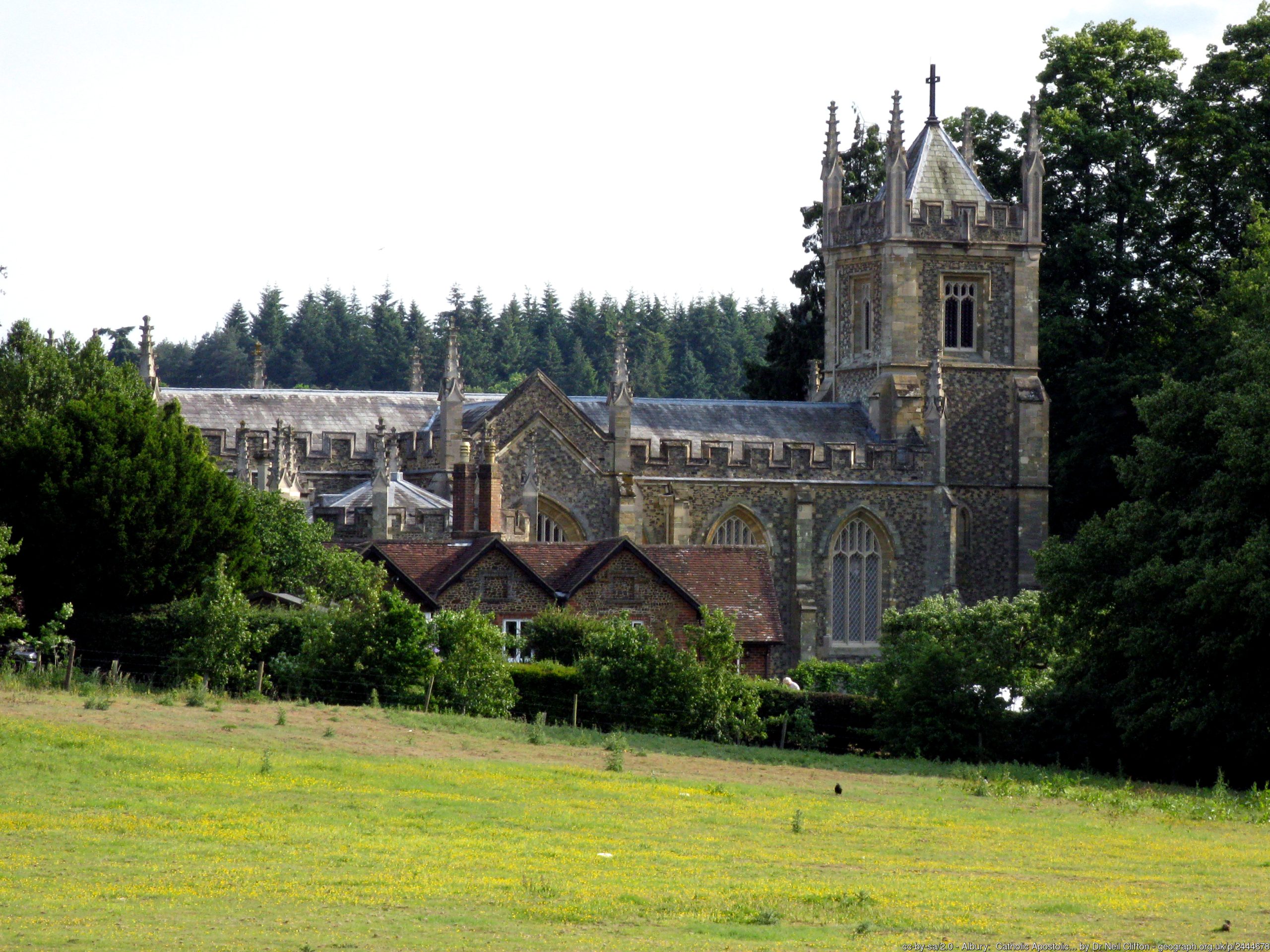
The Catholic Apostolic Church in Albury was designed by William MacIntosh Brookes in 15th century Gothic style and built from 1837-1840. It was commissioned by Henry Drummond, local landowner, MP and evangelist of the Catholic Apostolic Church. The Catholic Apostolic Church was a sect that was first organized around 1831, with a preoccupation with the return of Christ. Drummond was one of twelve “apostles” appointed by the church. When the last of the initial apostles died in 1901, the church at Albury was shut off from the outside world, not to be opened until the second coming. And so it has remained ever since. While the grounds and building are maintained by the Catholic Apostolic Church Trust Property, the church remains sealed until the second coming.
The Atlantic Wall, Hankley Common
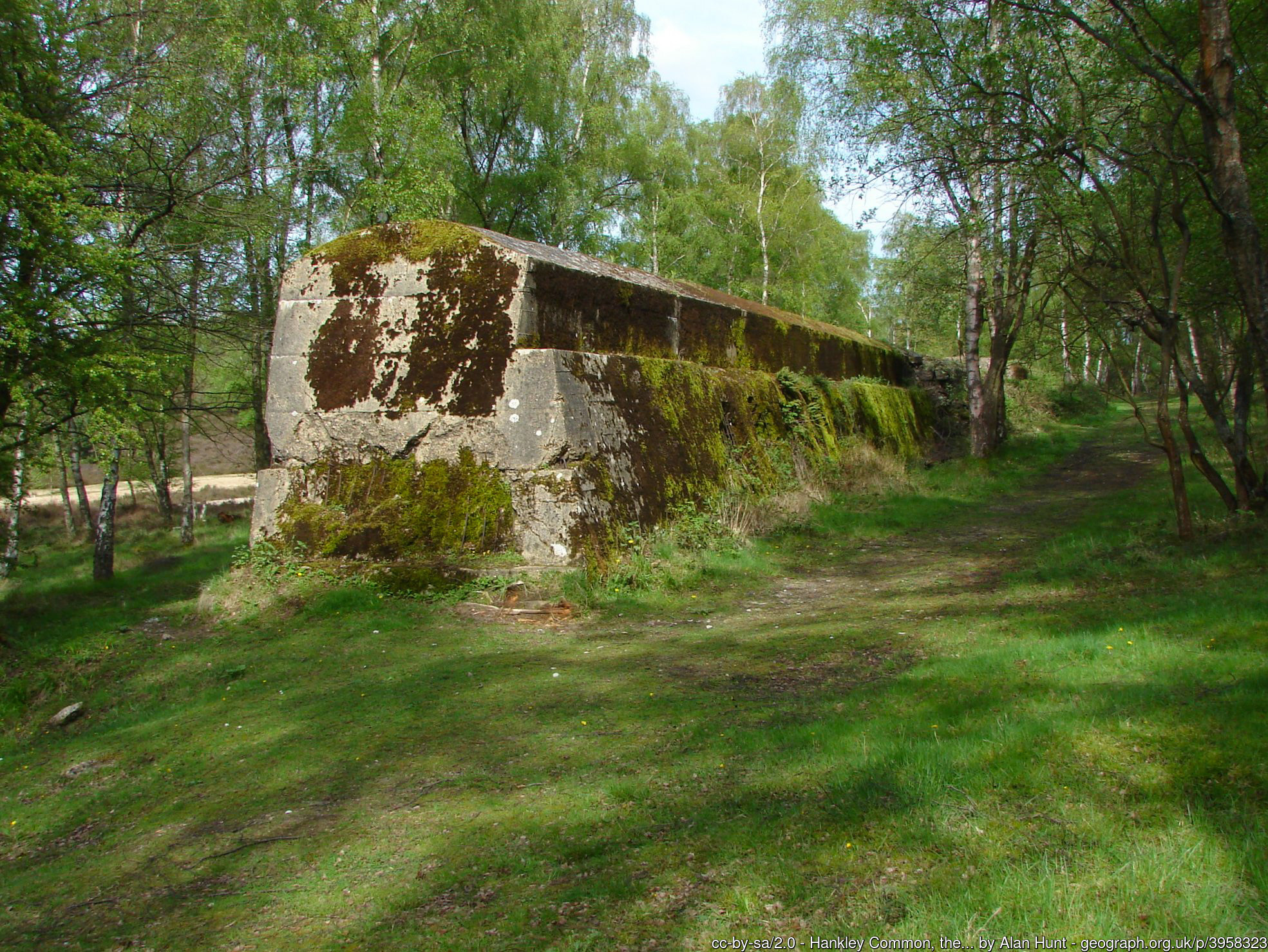
During the Second World War, D-Day training sites were created in Britain in order to practise for Operation Overlord, the invasion of Northern France by allied forces in 1944. In 1943, in an area of the Hankley Common known as the Lion’s Mouth, Canadian Troops constructed a replica of a section of the Atlantic Wall, the Nazi’s extensive system of coastal defences. It was used as a major training aid to develop and practise techniques to breach the defences of the French coast prior to the D-Day landings.
Jack Phillips Memorial Garden, Godalming
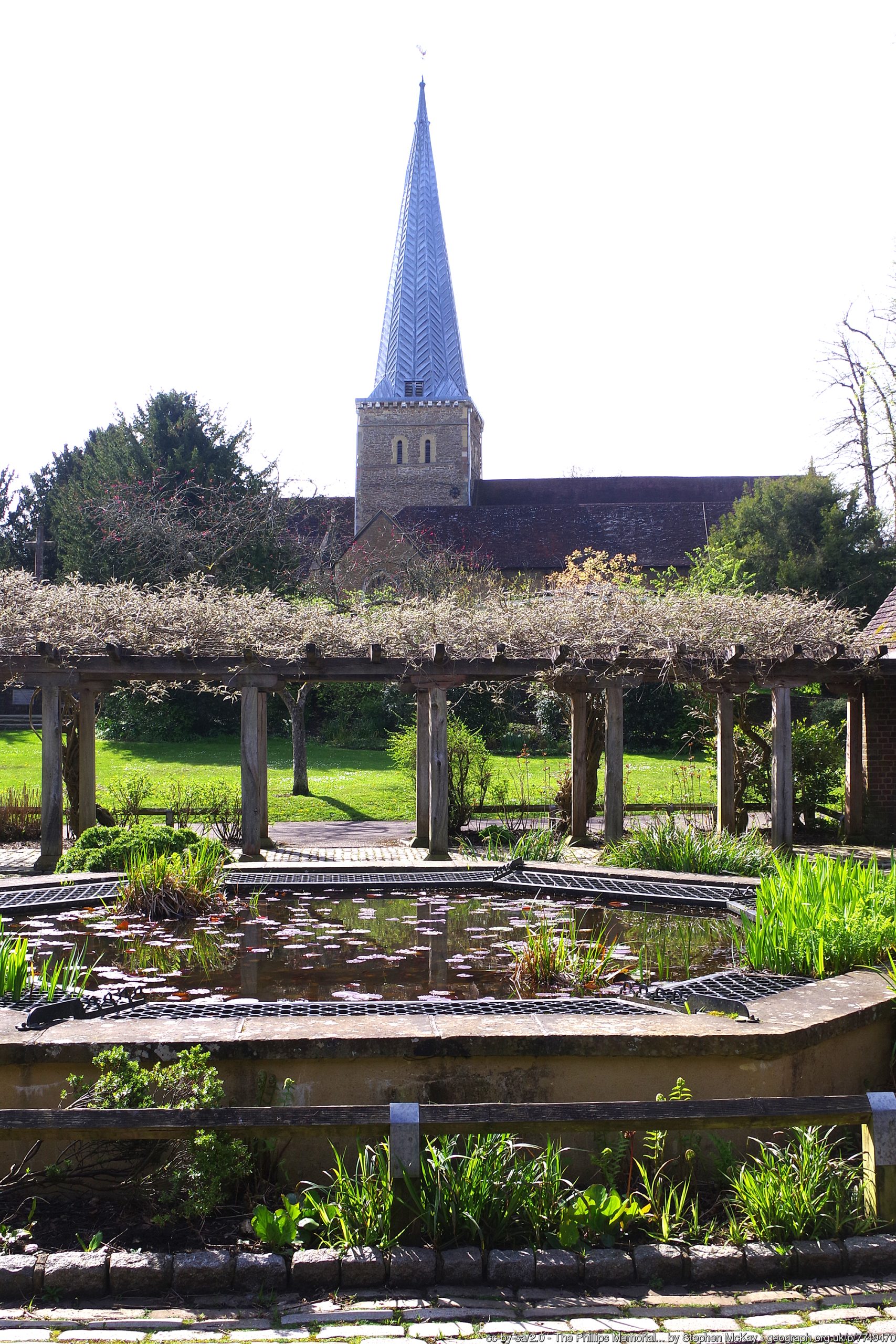
Jack Phillips, the senior wireless operator aboard the Titanic, was born in Farncombe in 1887. The Phillips Memorial Garden, a garden designed by Gertrude Jekyll with a magnificent brick cloister designed by Hugh Thackeray Turner, was laid out, built and opened exactly two years to the day after the sinking of the Titanic. Within the cloister, the Wireless and Telegraph Company commissioned and had erected a memorial stone tablet to the perpetual honour of this brave man, who died four days after his 25th birthday.
Our of Order, Old London Road, Kingston upon Thames
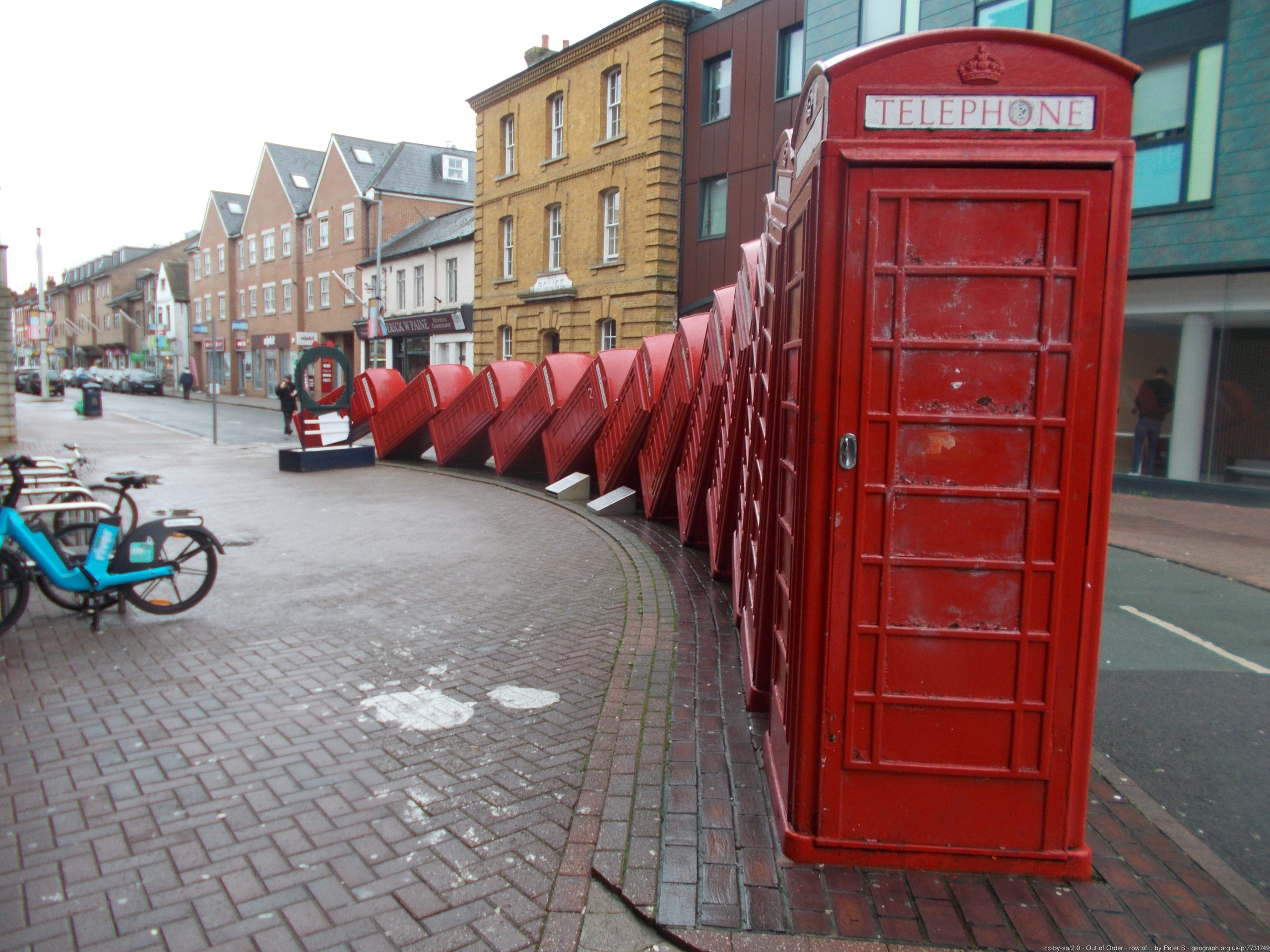
The ‘Out of Order‘ sculpture – which consists of twelve tumbling telephone boxes – has been in place on Kingston’s Old London Road since 1989. The piece was created by David Mach who has said of the installation: “I love these boxes and isn’t it funny that even in these times and although they were removed from the British landscape, I feel they still bind us as a nation.”
Surbiton Station
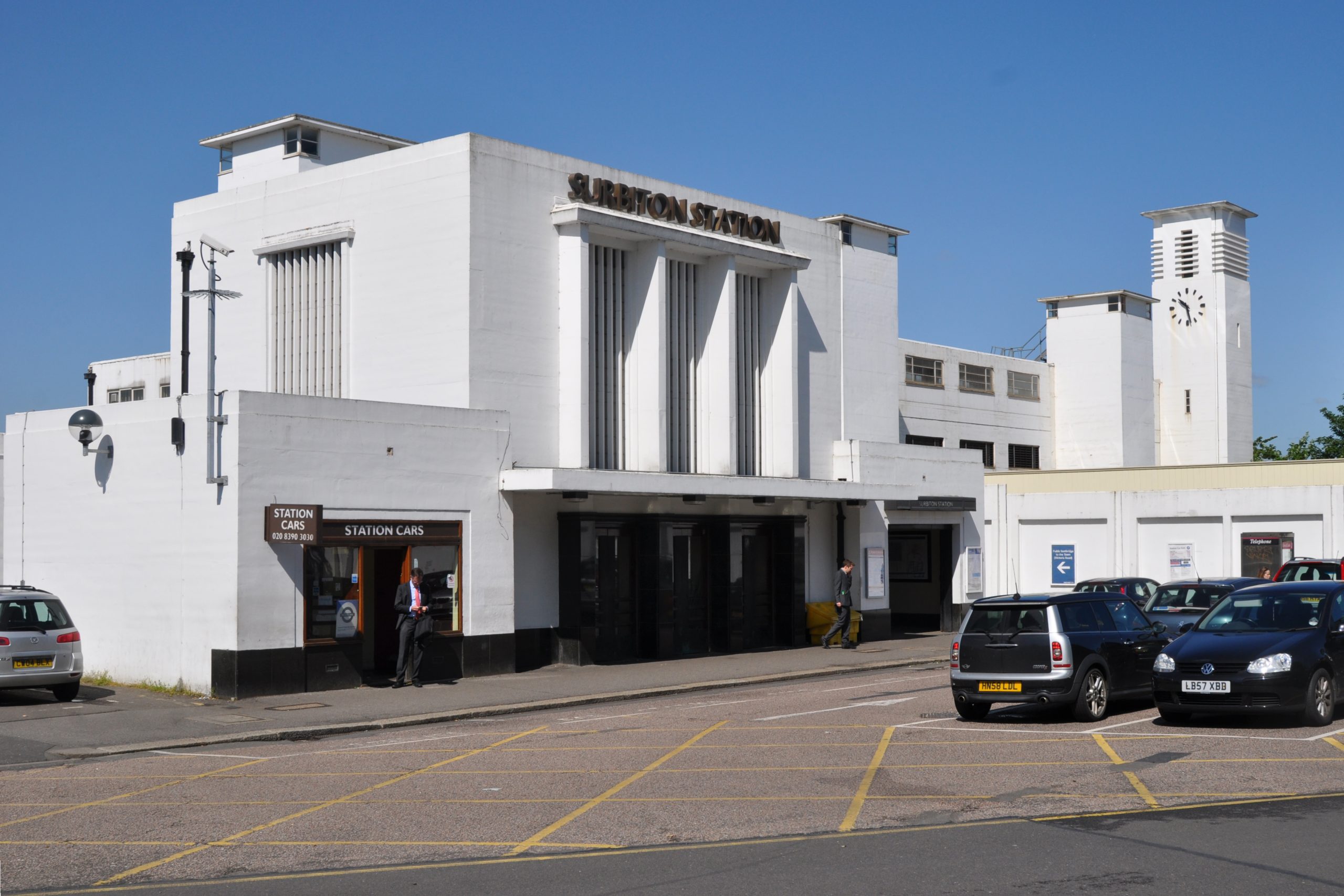
Perhaps not exactly secret but maybe sometimes overlooked is James Robb Scott’s art deco masterpiece Surbiton Station. Opened in 1937 it has been described as “one of the finest modernist stations in Great Britain”.
Air Forces Memorial, Runnymede
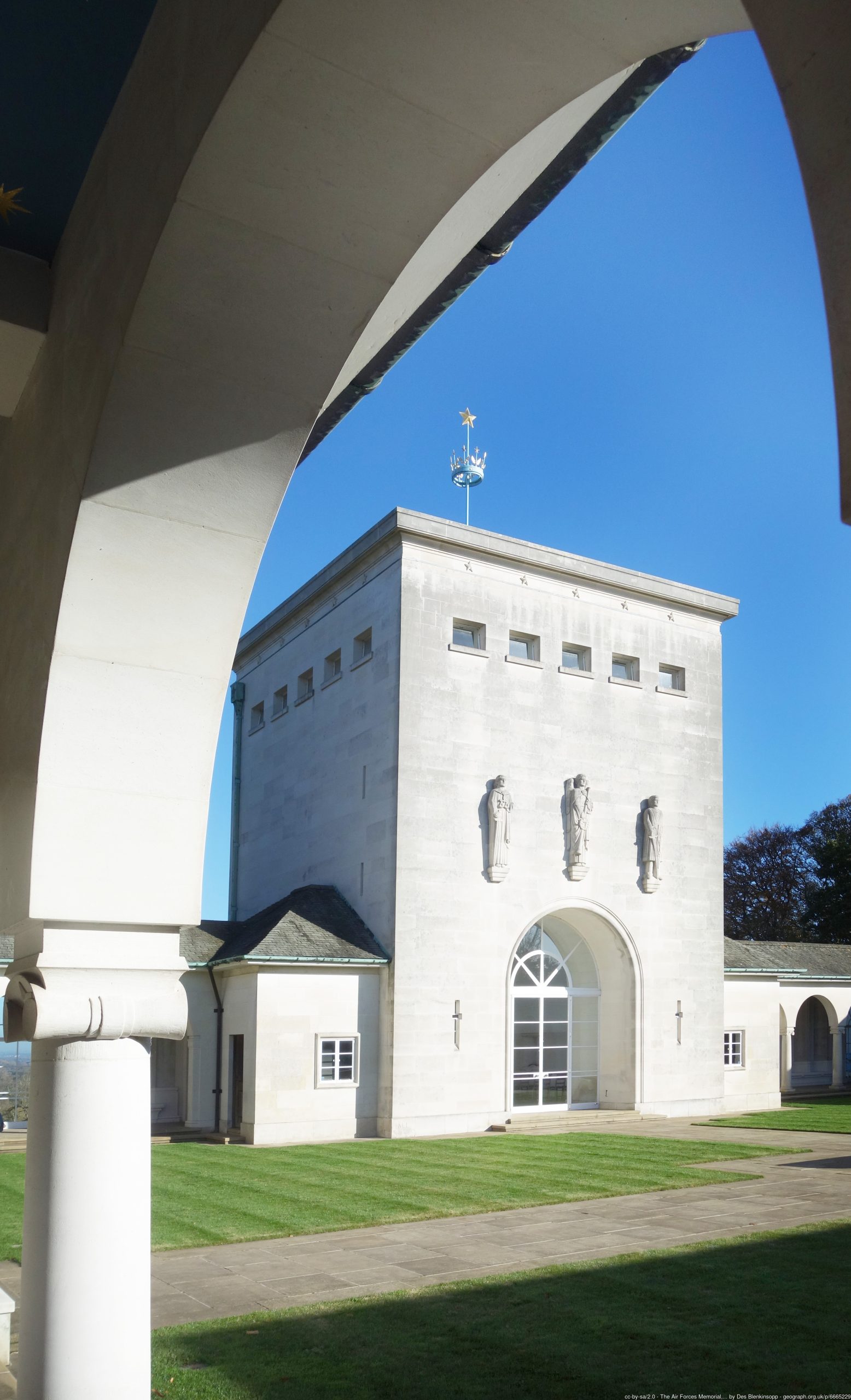
The Air Forces Memorial is an impressive and beautifully detailed monument to the fallen, occupying a prominent position on Coopers Hill, overlooking the River Thames. The memorial is dedicated to some 20,456 men and women from air forces of the British Empire lost during the Second World War. Those recorded have no known grave, and many were lost without trace. The name of each of these airmen and airwomen is engraved into the stone walls of the memorial. The memorial was commissioned and is maintained by the Commonwealth War Graves Commission. The architect was Sir Edward Maufe with sculpture by Vernon Hill. The engraved glass and painted ceilings were designed by John Hutton, and the poem engraved on the gallery window was written by Paul H Scott.
That’s our look at some of the lesser known gems of Surrey. With many thanks to BBC Radio Surrey whose excellent series Secret Surrey was the inspiration for this article. What would be your choices?
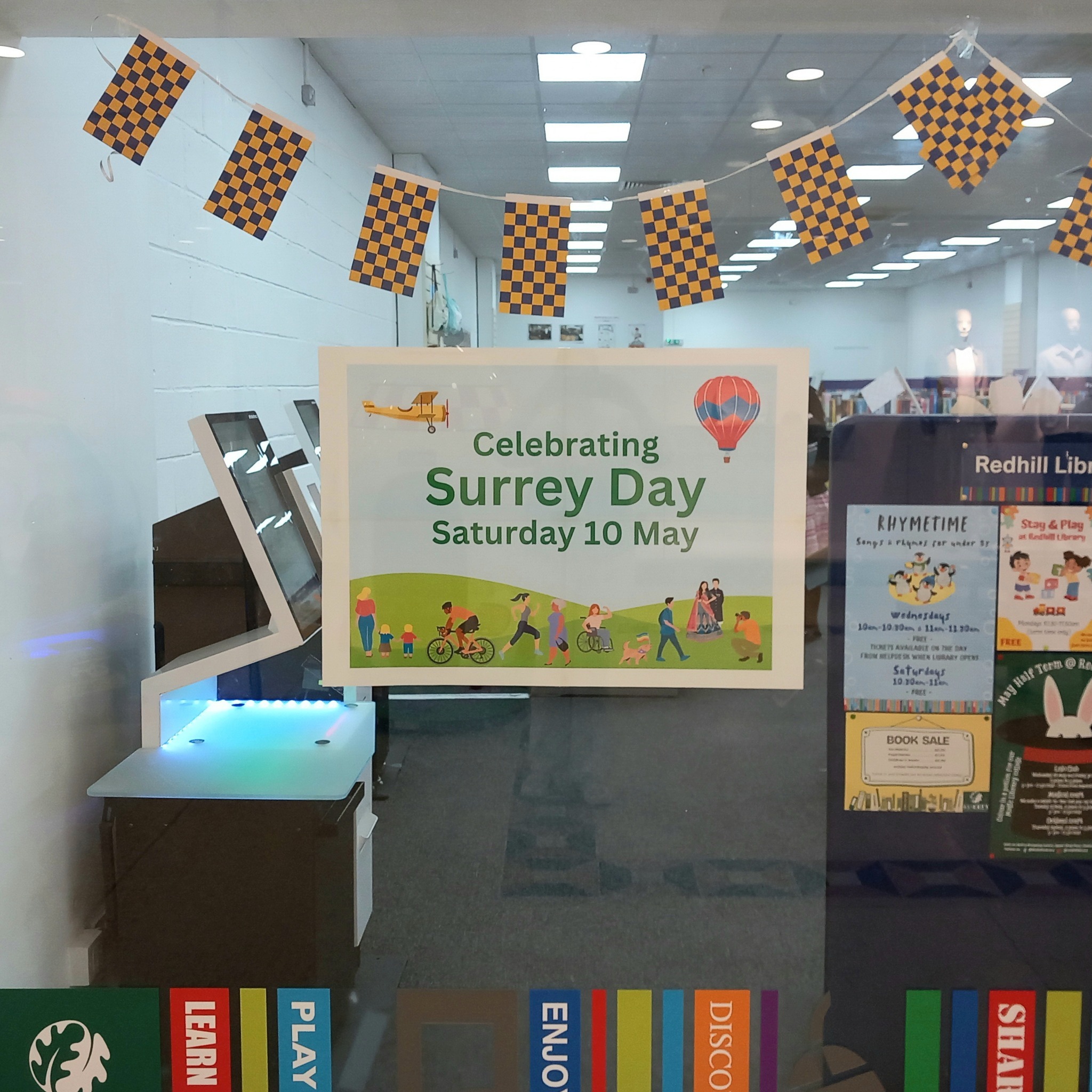
The banner image is courtesy of Painshill Facebook page.
